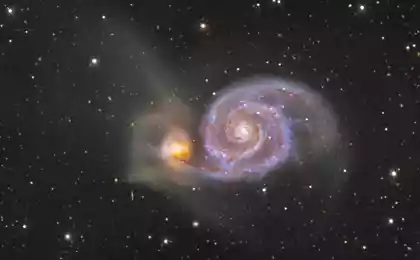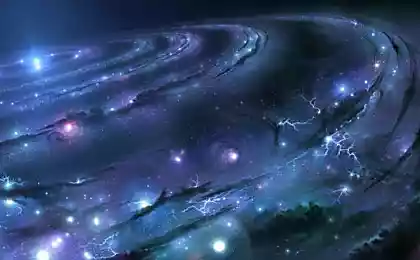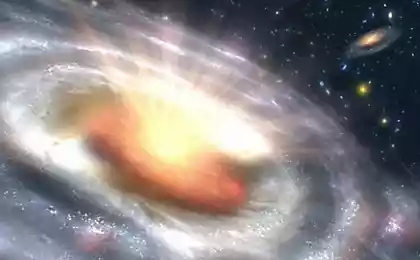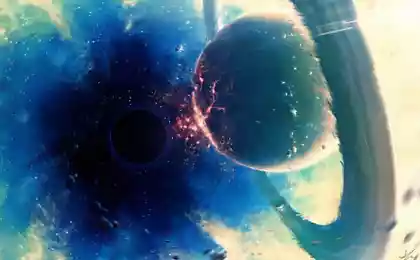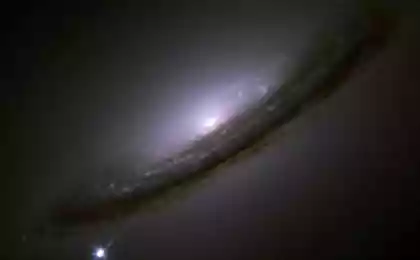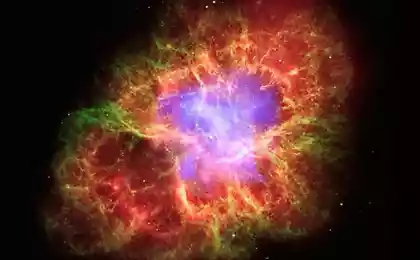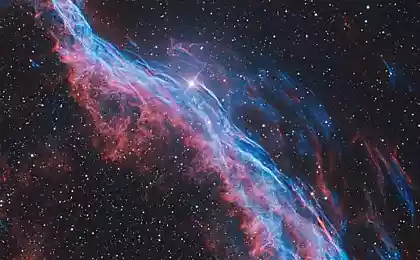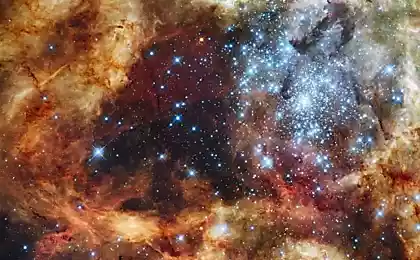910
In the center of the galaxy is full of vampires dying systems
2,136,422
We can not look the part of our galaxy, but we can study galaxies that are very similar to ours. This spiral galaxy M 81 in the constellation Ursa Major at a distance of 11.8 million light-years (clickable). I>
This week astronomers at Columbia University опубликовали in the journal Nature data points derived orbital X-ray telescope NuSTAR . Telescope new generation has allowed scientists to look into the heart of the Milky Way, and make the next step to the knowledge of the device surrounding space.
Our planet, along with the solar system is located on the quiet outskirts of the galaxy, away from saturated spiral arms. In the center of life is much lively - giant gas and dust clouds, small black holes, new and dying stars, not to mention the supermassive black hole at the center.
Due to space observatory Nuclear Spectroscopic Telescope Array (NuSTAR), running on the new technology "glide reflection" manage to weed out the low-energy radiation, and look inside the densely populated area of the galaxy with the help of high-energy X-rays. It turned out that the center of the galaxy emits an active rigid X-rays.
Science has known two types of candidates for the sources of such radiation - it is the remains of stars (white dwarfs, neutron stars, black holes are small) and the supermassive black hole at the center of the galaxy. Based on the data received less sophisticated tools, it was believed that the center is dominated by аккреционные of white dwarfs. This system of double stars, one of which is having a great weight pulls the matter of the second star. Such systems are widely known as' systems Vampire ". This process is accompanied by the emission of active mainly in the low-energy range (less than 10 keV).
However NuSTAR showed that in the center of the galaxy is much more hard X-rays than previously thought. This may indicate, for example, a much larger number of accretion systems or dense flow of particles interacting with the surrounding radiation. But any of the theories that explain the new observations, astrophysicists will change the current view of the structure and evolution of galaxies of stars.
What is more interesting, you can read and see about our galaxy:
Milky Way in all its beauty 5-gigapixel Панорама Milky Way Sunrise galactic center Milky Way disk of the Milky Way may be 50% larger than previously thought < /
Source: geektimes.ru/post/249898/
We can not look the part of our galaxy, but we can study galaxies that are very similar to ours. This spiral galaxy M 81 in the constellation Ursa Major at a distance of 11.8 million light-years (clickable). I>
This week astronomers at Columbia University опубликовали in the journal Nature data points derived orbital X-ray telescope NuSTAR . Telescope new generation has allowed scientists to look into the heart of the Milky Way, and make the next step to the knowledge of the device surrounding space.
Our planet, along with the solar system is located on the quiet outskirts of the galaxy, away from saturated spiral arms. In the center of life is much lively - giant gas and dust clouds, small black holes, new and dying stars, not to mention the supermassive black hole at the center.
Due to space observatory Nuclear Spectroscopic Telescope Array (NuSTAR), running on the new technology "glide reflection" manage to weed out the low-energy radiation, and look inside the densely populated area of the galaxy with the help of high-energy X-rays. It turned out that the center of the galaxy emits an active rigid X-rays.
Science has known two types of candidates for the sources of such radiation - it is the remains of stars (white dwarfs, neutron stars, black holes are small) and the supermassive black hole at the center of the galaxy. Based on the data received less sophisticated tools, it was believed that the center is dominated by аккреционные of white dwarfs. This system of double stars, one of which is having a great weight pulls the matter of the second star. Such systems are widely known as' systems Vampire ". This process is accompanied by the emission of active mainly in the low-energy range (less than 10 keV).
However NuSTAR showed that in the center of the galaxy is much more hard X-rays than previously thought. This may indicate, for example, a much larger number of accretion systems or dense flow of particles interacting with the surrounding radiation. But any of the theories that explain the new observations, astrophysicists will change the current view of the structure and evolution of galaxies of stars.
What is more interesting, you can read and see about our galaxy:
Milky Way in all its beauty 5-gigapixel Панорама Milky Way Sunrise galactic center Milky Way disk of the Milky Way may be 50% larger than previously thought < /
Source: geektimes.ru/post/249898/
ESA publishes all pictures Rosetta and Philae: pictures of the comet Churyumov-Gerasimenko, from "A" to "Z"
Photos from the highest shutter speed

